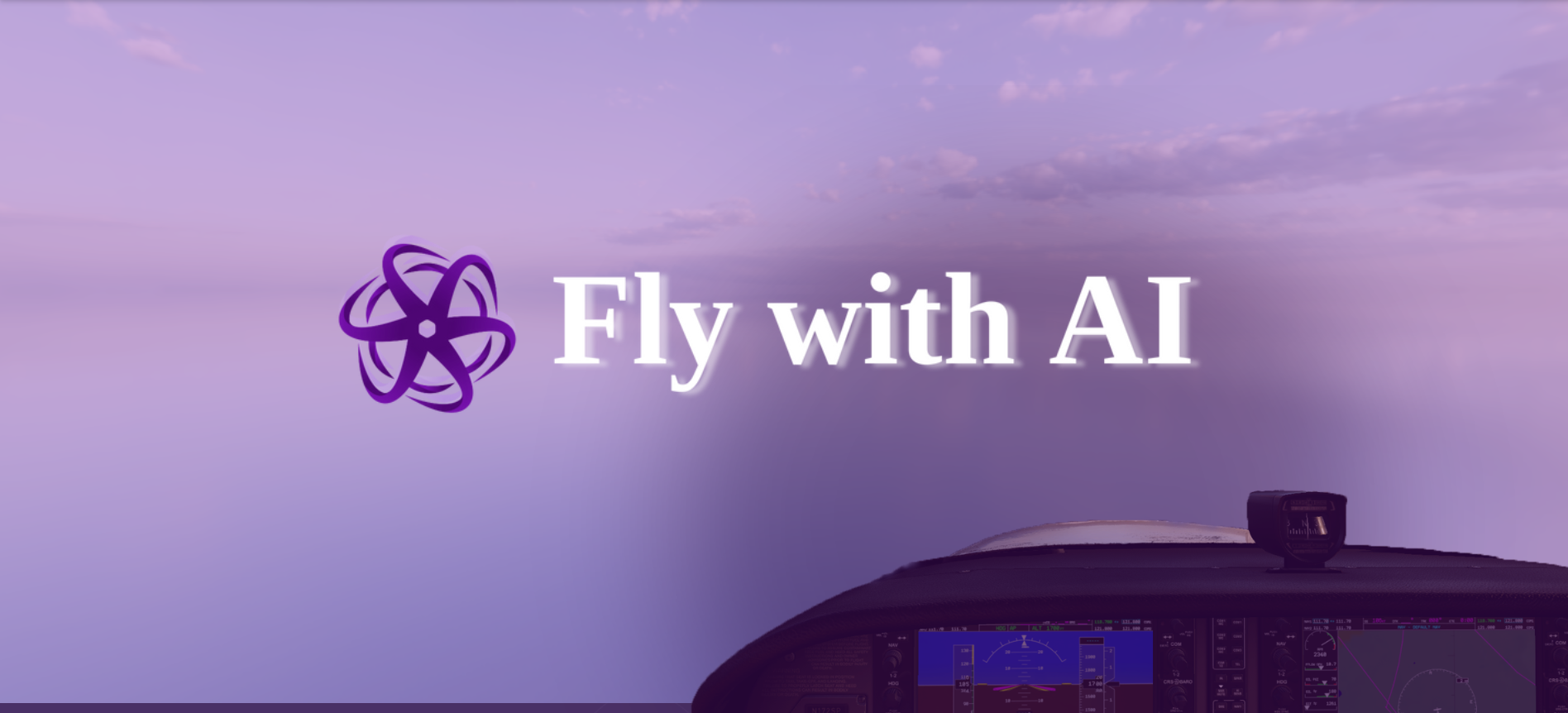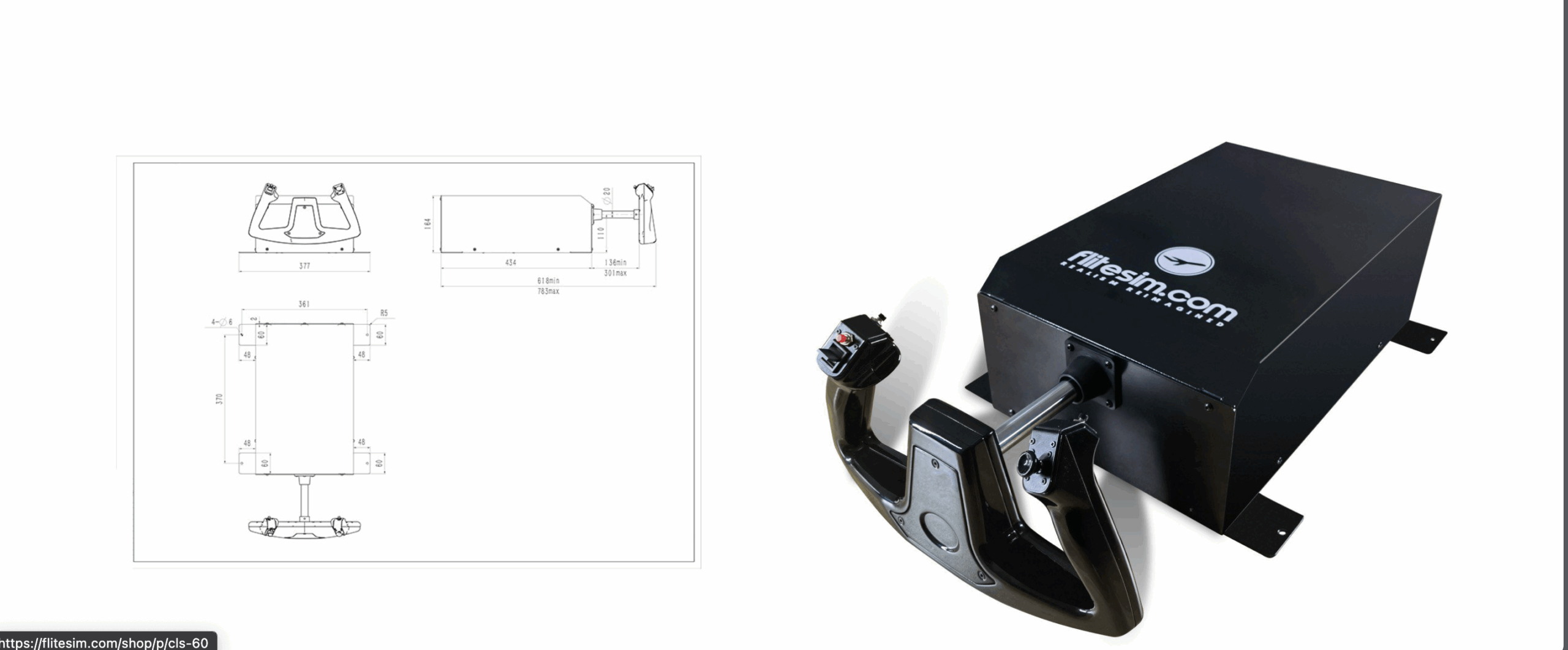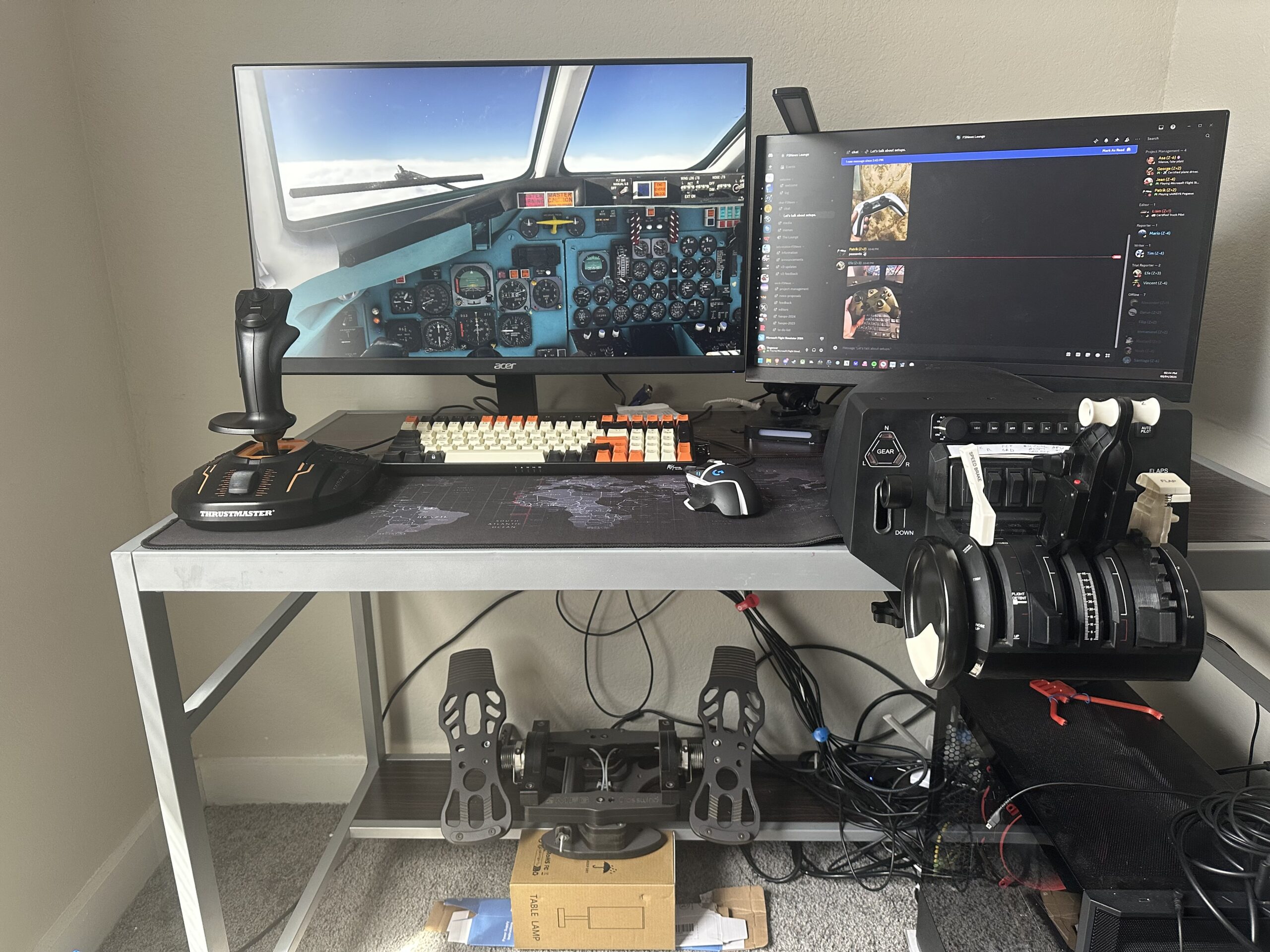Recently, a well-known development team of iFly has released their rendition of Boeing 737-MAX8 for Prepar3D. The team of iFly is known for a variety of Boeing jets for Prepar3D, FSX and even FS2004. Firstly, I would love to thank iFly for this wonderful opportunity of reviewing one of their products. Even though I received the 737-MAX8 for free, my opinions are going to be completely honest.
Boeing 737-MAX8 is the fourth generation of the legendary Boeing 737. Even though it has a very infamous past, the aeroplane is now becoming more and more popular among airlines all around the world. It is a narrow-body airliner that can carry up to 189 passengers in a normal configuration, or up to 200 in the 8200 configuration (used by Ryanair). The aeroplane uses two strong CFM LEAP-1B engines. Malindo Air was the first airline to adopt the 737-MAX8 in use.
Installation
Honestly, Flight1 Agent has to be one of the more outdated flight simulator applications to date. Its software is not visually appealing to me, though it does the job right. There was nothing wrong with the installation, the Agent app downloaded the installer and I went through it as usual and installed the iFly 737-MAX8.
What did surprise me is the application that runs after the installation. This application is going to read your BGL files, which will create charts in the available EFB. I didn’t know what it is so I had to do my research. While this is a bit clunky solution, I do understand the add-on does this to make the charts as accurate as possible.
This already gives the developer some bonus points for giving effort into actually trying to get airport maps more usable within the MFD panel and the EFB. Some developers stagnated the most on recreating charts within the aircraft systems.
iFly 737-MAX8 Software, Liveries and Management
Configuration Tool, as Flight1 Agent, feels outdated. However, it does the job perfectly, at least to a certain extent. I would compare it to Qualitywings 787 Dispatcher. Through there, you load your cargo, payload, fuel and so on. It does the job even when you are already loaded.
Speaking of the livery manager, there are a plethora of liveries already available. Some of them are very good but some of them need much more work. I will get into this later, though. The issue I have with the livery manager is that it doesn’t remember which liveries you already have. Thus, you can download one livery twice. You will receive an error after you download it, not before, unfortunately.


First impressions
The aeroplane and its first feeling was to me way more than satisfactory. I personally use TrueSky, so the textures came out better than any other airliner I have seen to date in Prepar3D v5 with TrueSky on. For example, some Prepar3D add-ons have issues with having way too dark cockpits, whereas iFly 737-MAX8 doesn’t have this issue.


It is a different story for users that don’t use TrueSky, as the aeroplane looks washed out and not as impressive.
The modelling was also done nicely, and the cabin offers also a detailed depiction. The cabin detail is just overwhelming. The iFly team has done a superb job and made the aeroplane look appealing at first sight.
Aircraft settings and options
The very first thing I always look into before your first flight is the settings, external systems and options of the aircraft. This rendition of 737-MAX8 is offered with a plethora of cockpit options, cabin varieties as well as ground connections.
Speaking of the ground connections, to the aircraft you can obviously connect the GPU and air conditioning to the aircraft.
You can either manage the ground connections through the Prepar3D top-down menu, in add-ons and the iFly section, or you can find them in the EFB. It is much simpler for ordinary users to manage this in the EFB, but home cockpit builders are definitely going to enjoy the drop-down menu option more.


Overall, the systems are built around home cockpit building. In the menu, you can also change your keyboard keybinds to actual aircraft buttons and functions. This makes it easy to program your home cockpit, at least it seems like so.
With complex options sometimes comes trouble
I would say, that I am spoiled with modern airliner add-ons and their functionalities. Everything is easy to navigate and go through. However, here, in the iFly 737-MAX8 I tripped over a stone on the ground in terms of systems and the navigation through it. I had several issues with actually getting into stuff I need and it took me more than 40 minutes to figure out where the door controls are. After that time, I found out that you can find all of that in the EFB. However, it took me long time to find it because the aircraft options are rather hidden.



I also had trouble with going through the keybinds, as I initially thought that I have to bind a key which would then open my doors. Firstly, I just couldn’t get the keybinds working because it has been always resetting my settings after pressing “OK” for some reason.
To my taste, the aircraft options system is extremely outdated and iFly team definitely needs to look into this and revamp it. This will make the experience much better for namely younger flight simulator enthusiasts, as I am, for example.
Modelling
Exterior
The iFly team has done a superb job on the exterior. Be aware, though, that this is on Prepar3D, so the exterior model also recreates the 3D cabin interior, to give the aircraft more depth. The detail is impressive, with any smaller object recreated as it is on the real-life counterpart of the iFly 737-MAX8.


There are various fins, pitot tubes and a plethora of details on the landing gear recreated. The polygon transition is smooth, there are no jagged lines that would affect the immersion. The exterior is smooth, modern, and detailed, yet, realistic.
As I have mentioned, the exterior model also includes the interior. Whilst it is not as detailed as in planes for Microsoft Flight Simulator, it is understandable noticing how the Prepar3D ESP engine works. Despite that, the cabin is detailed, and even small detail such as squared windows from the outside and rounded from the inside (which real 737 MAX actually has) is present.


While the cabin is not as detailed as the exterior itself, there is one specific reason I prefer this kind of model over the others in Prepar3D. The iFly team actually animated the displays in the exterior model of the cockpit. I have never seen such thing in a Prepar3D aeroplane and it is a nice little touch, which will make your exterior screenshots even more impressive.



One thing that isn’t impressive, though, is the lack of cabin lighting in the passenger cabin. During the night, the passenger cabin is completely dark. I found a setting in the EFB, which changes the cabin lighting, however, it seems to have no effect on the model itself.
Overall, iFly has done a superb job on the exterior model.
Interior
Here, I am going to speak only about the cockpit itself, as that is the only part of the actual interior model. The team also gave a lot of love to this part of the aircraft. All the knobs, switches and buttons have a smooth-looking 3D model blended well into the cockpit.
I could write poems about how the model is perfect. However, I have to say that the photos are going to tell you more about how insanely detailed this cockpit is in terms of modelling.



The cockpit model also includes both wings and engines recreated, as you can see them from the cockpit in real life as well. The iFly team also modelled the tail wing, but no stabilizers, for some reason. In the cockpit model, the engines are animated the same way as they are in the exterior model.
Prepar3D has always had problems with recreating aircraft shadows visible from the cockpit. When a developer didn’t recreate the whole aeroplane in the cockpit model, the simulator engine would only display a floating cockpit on the ground, which is, strange-looking to say the least. In this case, iFly thought about it and there is a very basic model of the whole fuselage recreated, to make the ground shadows of the aeroplane look like it is an actual aircraft, not a floating full-motion simulator.
Texturing
All of the textures are PBR and are done around the TrueSky engine. This makes the aircraft look impressive with my simulator settings. The textures are crisp and sharp and their colouring seems right to my eye. I should mention that I have never flown, or been to a 737 MAX cockpit, thus, I cannot compare it for granted.



Speaking of exterior texturing, the iFly team also did this exceptionally. There are visible rivets and panel lines, but they are not that pronounced. It should also be noted that this depends on the livery as well.
There are numerous liveries available and I want to speak about those as well. While iFly is not the one who creates true-to-life liveries in this case, there are loads of them. And I like that, I can fly pretty much any bigger airline that operates the 737 MAX right away, after installation, pretty much on the release day.
While I am a fan of almost all of those, as they are done to the smallest detail, I have a significant problem with the TUI one. The colours on this one seem odd, the dark blue goes to that purple-ish tint, which gives it an unrealistic feel to a beautiful livery.
I also had this strange visual glitch with my winglet during my first flight.


PBR
I am in love with the PBR materials, though. Namely, the cockpit displays reflection. I love when a glossy display reflects the sun from its surface. Even though the reflection is rather low-quality, we have to keep in mind this is a Prepar3D engine. Still, it is a feature that I don’t see often on a Prepar3D aeroplane.


In the cockpit, I can easily determine which material is glossy, matte, metallic and so on. The iFly team made clear differences with their PBR in these materials, creating an impressive recreation of the real cockpit. It really brings you into a real one with how it feels.
The exterior PBR is also wonderful. This can be seen on the engine, especially. The exhaust is matte, but the anti-ice ribbon in front is metallic and the fuselage is glossy and reflects the surroundings. This depends on your settings as well, but overall, the exterior PBR creates something pleasant to look at and I love it.


Speaking of the textures, I have to say all of the texturing is done well, and I love looking at this aeroplane in detail, as there is always something new to look at.
Flight model
Firstly, please be aware that I am not a real pilot and this is purely my personal opinion. However, this opinion is based on my experience with other add-ons and what I’ve been told by real pilots. The flight model is sturdy. Even in the simulator, you can really feel how the engine placement on the 737-MAX8 affects the aircraft’s flight model and performance. The aircraft is strong, however, you can over-trim it easily.
You should be aware that this is not “that classic” Boeing 737 and it is significantly different in terms of hand flying. It is reactive and on approach, the aeroplane is rather lazy and you can easily slam the landing. At least, that is my case, I just need a bit more training.
The stall mechanics are also realistic in my opinion. During stall, the aeroplane doesn’t hold in the air, almost at all and you have to think quickly to actually recover the plane, as it is rather difficult.
Aircraft systems
General
The iFly 737-MAX8 systems are realistic, yet, simplified. When you set up your trim in the FMC, the plane automatically trims itself to the unit in the FMC. The same applies to MCP altitude, when you put your altitude into the MCP, the pressurization panel will copy it. Furthermore, the pressurization panel also determines the landing altitude by itself. I didn’t find any settings for this, probably because it is too difficult for me.
Speaking of the clickable buttons, this is rather different to other add-ons. You will have to use both your left and right mouse button to actually do something. By that, I mean that if you want to turn on your engine cutoff, you have to use your right-click. Vice versa, if you want to turn it off, you have to use your left-click. This is just an example, and it applies to much more buttons, such as landing lights, battery, IRS and so on.


One thing I find difficult though is to click those button covers that are over emergency lights and batteries, for example. Their hitboxes are so small that I simply cannot click them on the first try. I definitely recommend iFly looking into this. This shouldn’t be a problem for home cockpit builders, however. A button I noticed that isn’t clickable at all is the oxygen test, which is crucial if you want to do checklists along your flight, this definitely ruins the immersion for hardcore flight simulation enthusiasts.
Autopilot and the FMC
The autopilot behaves as it should most of the time. However, from time to time it has issues with the descent profile. Especially in rough weather. The aircraft will jump up and down and cannot stabilize itself on its own until you step in and switch to vertical speed and back. You will also have to apply a lot of speed brakes during your descent. The climb and cruise profiles work normally.


The FMC is a classic Boeing FMC and does everything as it should. There is nothing special about it, though it automizes some stuff for you, which I would love to turn off, but didn’t find the setting, even after many tries. For the lazy pilots out there, you can also insert a company route you download from Simbrief into this FMC without any hassle.
I should also mention that if you use GSX, the GSX will reset your trim to a completely ridiculous value, like 10 or 15 units. I don’t know why this anomaly happens, but you should be aware of it, as the trim actually influences the iFly 737-MAX8 a lot.
The EFB
What I did find though are the settings in the EFB, which is also very detailed. Through there, you can set up how realistically your iFly 737-MAX8 should behave. You can change your IRS alignment time, and exterior variants, change the responsiveness of the FMC and so on. It is based on the Boeing OEM EFB. You can also link your Navigraph account to use charts within this EFB. For those looking for a challenge, there is a possibility to set up different aircraft failures through the EFB.


Animations
I also want to mention the animations, which are impressive. The yoke animation is very smooth and many Prepar3D developers can learn from it. The same applies to cockpit buttons, almost all of them are smooth but some of them have a little fewer frames per second. This doesn’t appear that terribly though and during normal operations, you won’t even notice it.
External animations of flaps, flight controls, trim and rudder are also wonderful. The landing gear retracts smoothly with no lagging and flight controls look like I am on a real aeroplane testing them and using them.
One thing that caught my eye though is the lack of wing flex. The wing is still, even in turbulent air, which completely ruins the immersion, at least to me. Again, home cockpit builders will not notice this, as they will most likely not be taking screenshots of their aeroplane in the air.
Performance of the iFly 737-MAX8
I am running Prepar3D v5.3 on a Ryzen 5 5600X system with 32GB of RAM and RTX 2060 Super with 8 gigabytes of VRAM. My Prepar3D settings are medium-high to high, with textures on medium and overall terrain detail on high settings.
I am also mentioning again that this aeroplane was built around the TrueSky engine, this is very important for the visuals as well as performance. The iFly team has done a superb job of optimizing the aeroplane and on my system, I have never had an issue with performance, even in more demanding airports.
My frames per second on cruise move at around 45 to 50, and it can go as high as 70 over big bodies of water. However, it can go as low as 30 on more demanding airports such as New York or London Heathrow. Namely with a lot of VATSIM traffic around.
Conclusion
The iFly team has finally brought up one of the most modern aeroplanes to date to a flight simulator. Whilst many developers focus on older aircraft that are not as popular these days, iFly has taken the opposite path, which I adore. This is because I enjoy real-world schedules with modern planes more.
While there is a group of people that might not enjoy the iFly 737-MAX8 due to its modernisation in every aspect you can think of, I can highly recommend it to anybody. I think that iFly is a competitive team of people that are ambitious enough on bringing their impressive skills to a wider audience.
Unfortunately, as someone who got into flight simulation as a hobby only six years ago, I can feel how iFly didn’t modernise their settings applications. These seem updated, and it took me a good while to actually find the things I need. Even though this influenced the out-of-the-box experience for me at first, I got used to it after the second or third flight.



The overall feel of the aeroplane is more than impressive. There is some stuff I miss, such as the lack of wing flex and oxygen test button. Some buttons are difficult to click and the cabin isn’t lit up during the night.
While there is stuff iFly can improve on, I can highly recommend this add-on, as this is the best 737-MAX8 available to date. And for the price of €65.75, it is definitely something worth considering to get into your Prepar3D hangar. You can get this wonderful add-on through the Flight1 website.
If you would like to learn more about the iFly 737-MAX8, you can read our article about the release here.
Feel free to join our Discord server to share your feedback on the article, screenshots from your flights or just chat with the rest of the team and the community. Click here to join the server.












